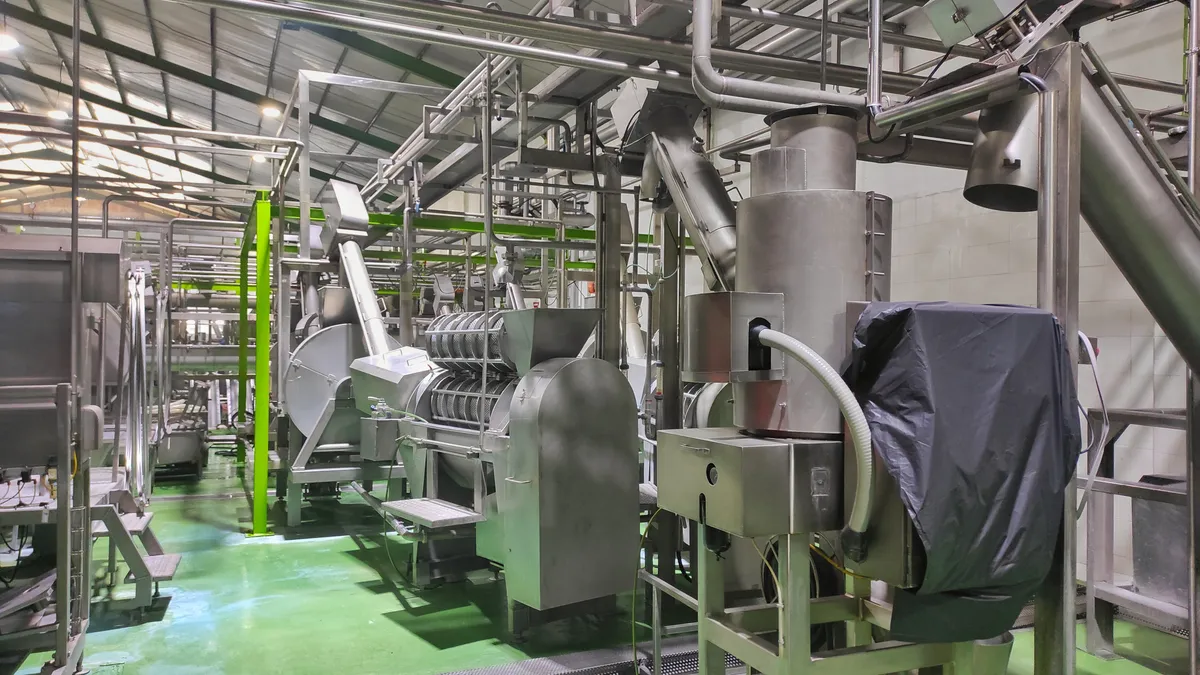Heat pumps and other emissions-free technologies could almost entirely decarbonize food and beverage processing in the United States by 2035, according to a report commissioned by the World Wildlife Fund and the Renewable Thermal Collaborative.
The food and beverage processing sector can phase out their use of coal and petroleum by 2030, and eliminate natural gas use by 2035, according to the “playbook” aimed at energy buyers and policymakers. “By 2050, electrification will be able to provide more than 85% of the process heat in the sector, most of which is from heat pumps,” it said. Solar thermal resources will also play a role.
“What's unique about the food and beverage sector is that because it's almost exclusively low-temperature process heat it is easier to electrify,” Cihang Yuan, WWF’s climate and energy senior program officer and a lead author of the report, said in an interview.
The food and beverage processing sector is the fourth largest producer of industrial heat emissions in the U.S., behind refineries, chemical processing and iron and steel production — all of which require higher temperatures, according to Yuan’s analysis. About 97% of the heat required for food and beverage processing is below 130 degrees Celsius, and is commonly used for pasteurization, cleaning and drying.
U.S. food and beverage processing was responsible for the emissions of about 90 million metric tons of CO2 equivalent in 2022, with animal slaughter and processing making up the largest share at about 22%, the report said, citing data from the U.S. Energy Information Administration. Grain milling, fruit and vegetable preservation, dairy production and sugar manufacturing are examples of other subsectors.
The report concludes virtually all of these emissions can be eliminated but also warns there are bottlenecks to electrification, including a shortage of electric heat pumps, workforce constraints, insufficient electrical grid capacity and utility rate mechanisms that make electrification uneconomical. “Addressing these barriers requires collective action and collaboration from energy buyers in the food and beverage industry, industry associations and coalitions, and policymakers,” the report said.
To address insufficient grid infrastructure, policymakers should comprehensively consider future grid needs and system operators should work with the U.S. Department of Energy “to ensure transmission planning processes are comprehensive,” according to the report.
Policymakers must also “seek to expand financial and policy support for transmission capacity improvements,” such as through the bipartisan infrastructure law. One issue there, however, is that “a lot of the subsidies or incentives available for heat pumps right now are primarily focused on the residential sector,” Yuan said.
Investments in energy efficiency by energy buyers and plant owners can also help the sector to decarbonize, the report noted.
Utility pricing structures also create difficulties, Yuan added. The report encourages policymakers to consider new rate structures for industrial users and to develop programs offering financial credits for reductions in fossil fuel consumption.
“Demand charges is one of the elements that creates a lot of uncertainty. The other is peak pricing ... and actually being able to get electricity during those peak hours,” Yuan said.
Some state regulators have implemented fixed-rate structures for industrial clients, and utilities can develop demand response programs that encourage industrial consumers to reduce electricity use during times of grid stress.
“This is going to be a new wave of demand coming in, and it’s going to present new business opportunities and challenges for the utility sector,” Yuan said. Power providers must “start to think about what type of options or what type of products the consumer may be demanding very soon.”
Correction: The subhead has been changed to correct the organization's name. It is the World Wildlife Fund.














